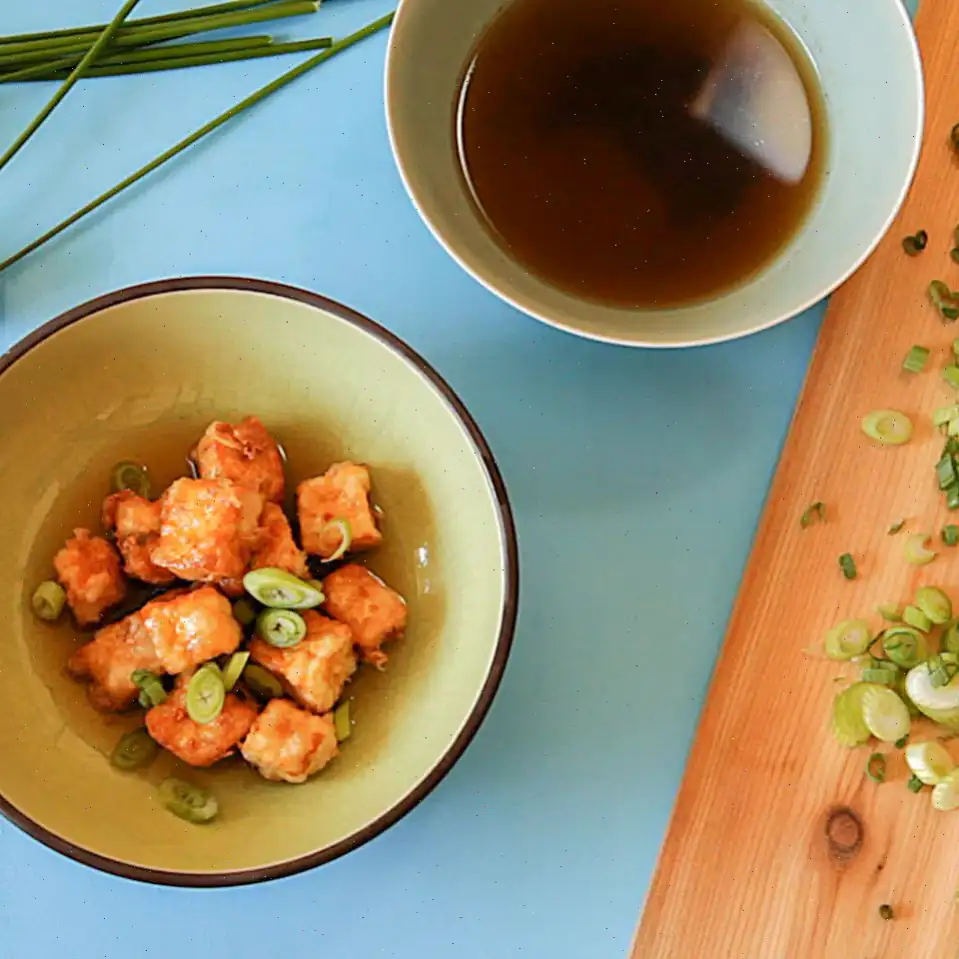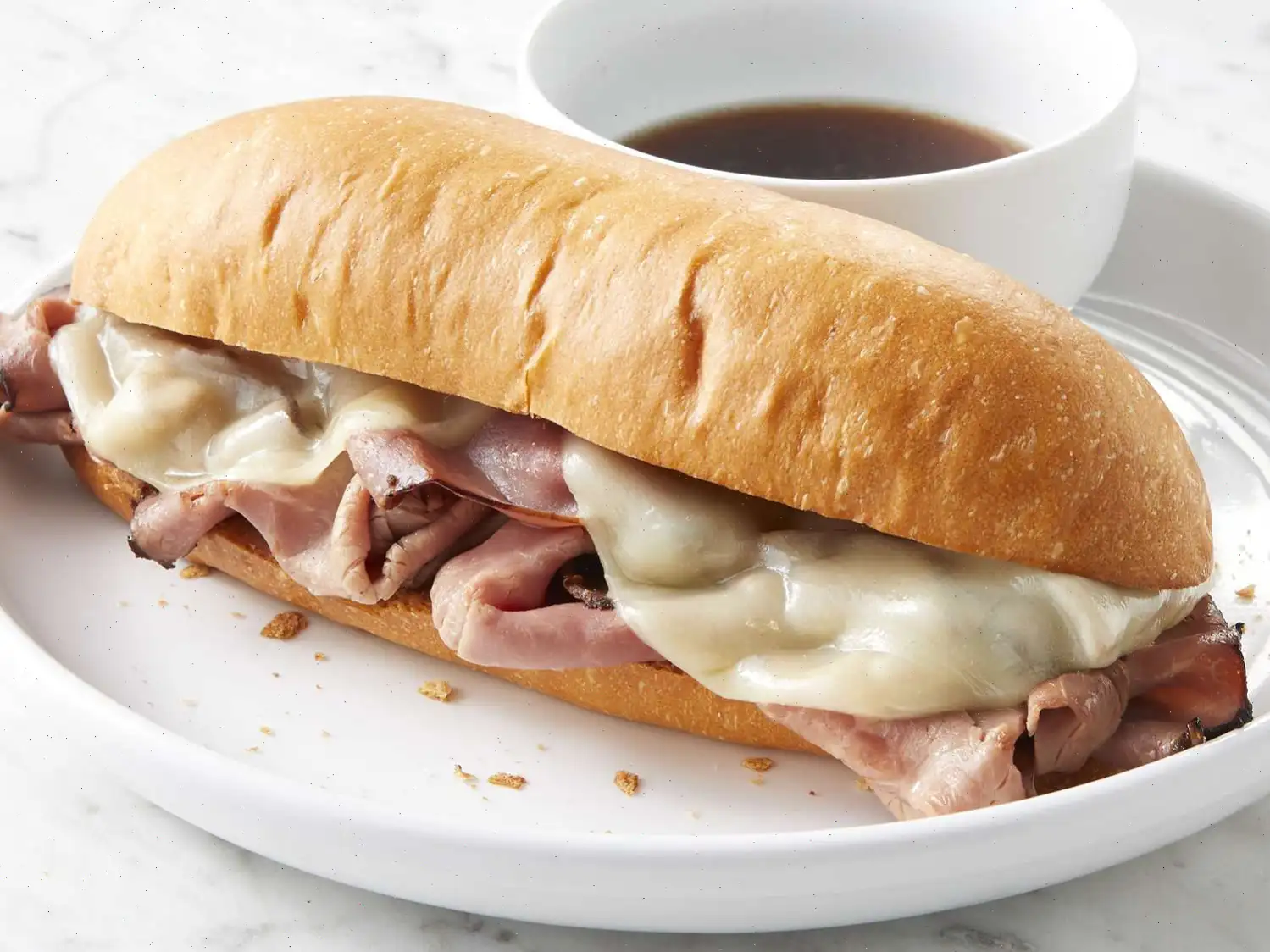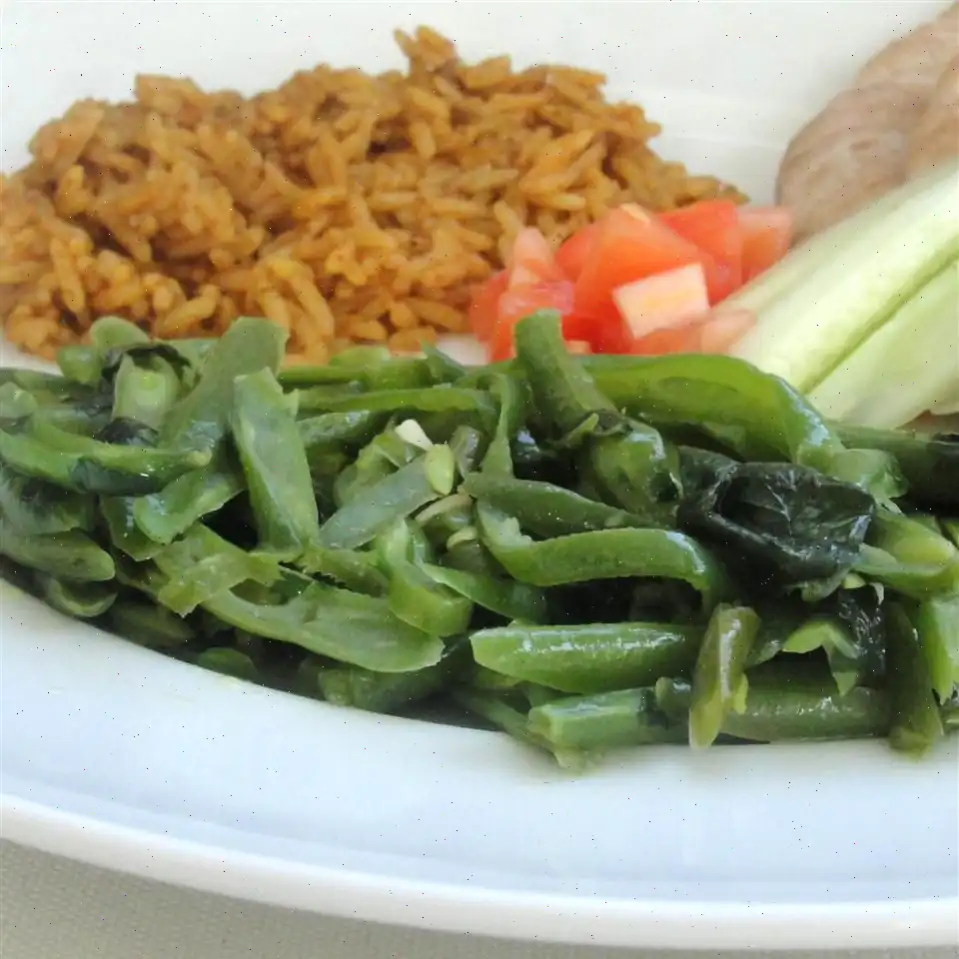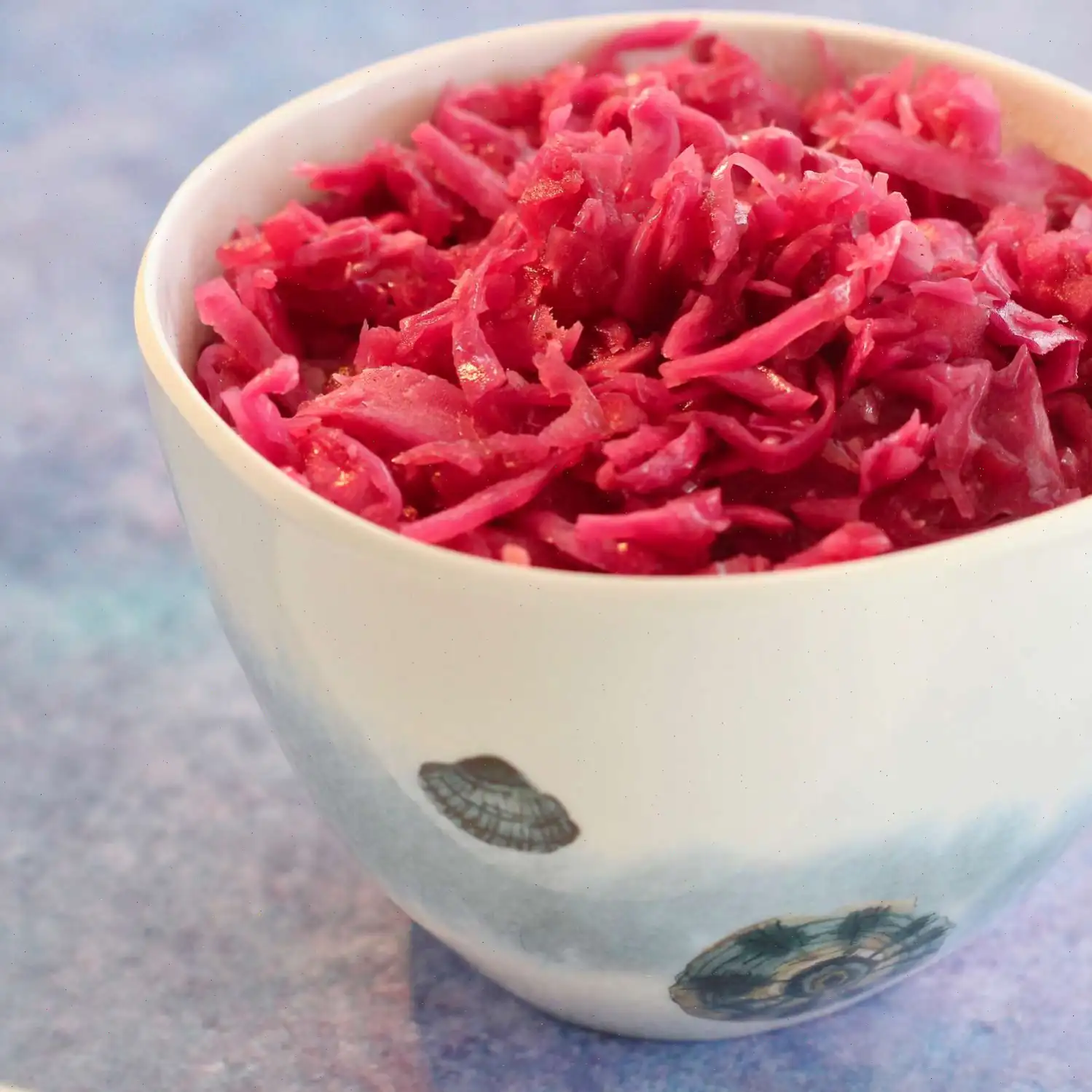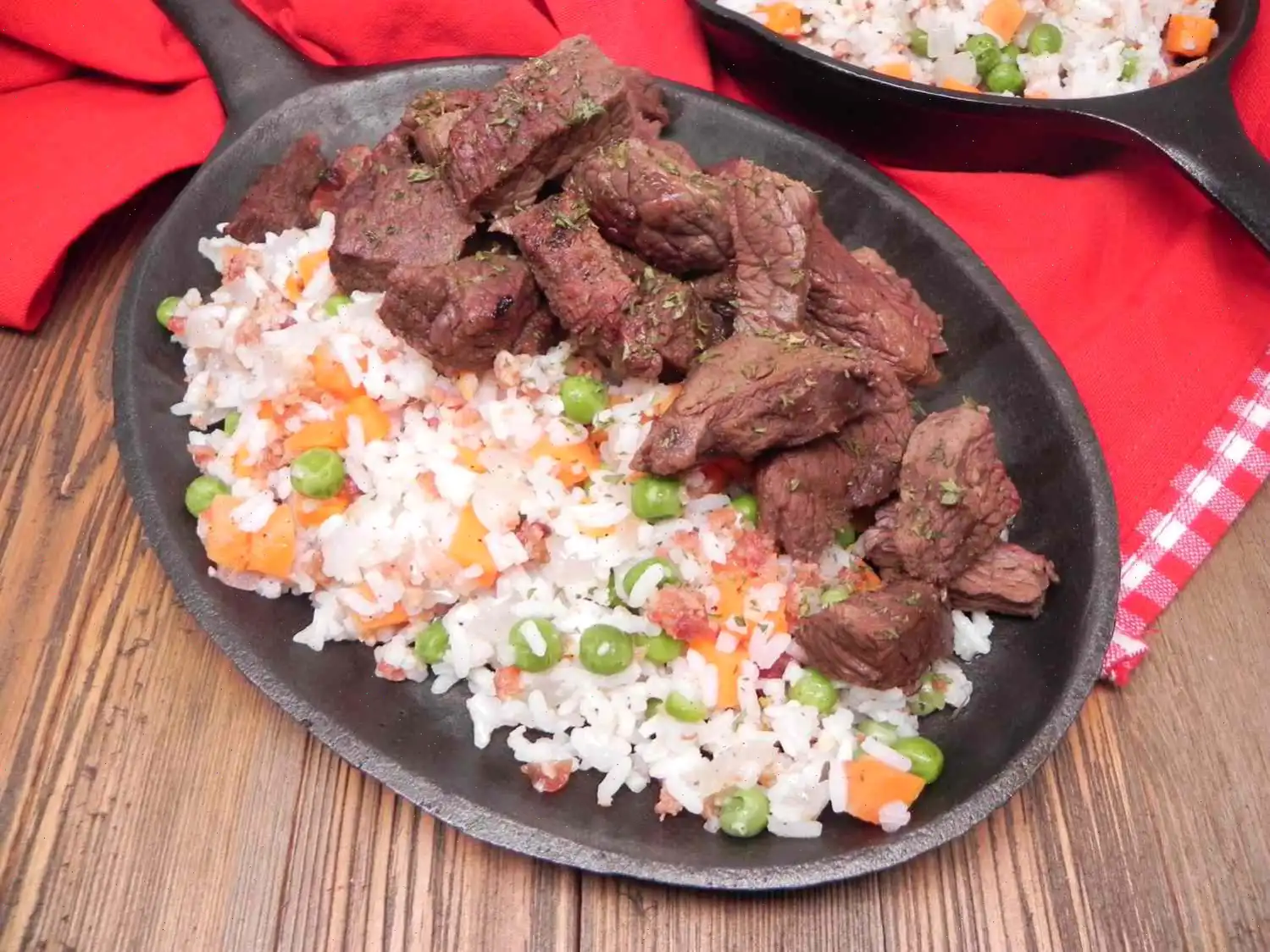
Japanese Agedashi Tofu Recipe
Tofu in Soy Sauce and Mirin
Ingredients:
- 1 (10.5 ounce) package firm silken tofu
- 2 cups water
- 2 tablespoons light soy sauce
- 2 tablespoons mirin
- 1 teaspoon dashi granules
- cup all-purpose flour (or as needed)
- Vegetable oil for frying
- 2 green onions, chopped
Directions:
- Place the block of tofu between sheets of paper towels. Set a plate on top and add a 3- to 5-pound weight to the plate. Press the tofu for 15 minutes, then drain and discard the accumulated liquid.
- Meanwhile, combine water, soy sauce, mirin, and dashi in a saucepan. Bring to a boil over medium heat, then remove from heat and set aside.
- Remove the weight, plate, and paper towels. Cut the tofu into -inch cubes.
- Place the flour in a bowl and lightly coat the tofu with the flour.
- Heat vegetable oil in a heavy pot over medium heat. Fry the tofu in batches until golden-brown, 4 to 6 minutes. Be careful not to overcrowd the pot.
- Place the fried tofu on a serving dish and pour the sauce over the tofu.
- Sprinkle with chopped green onions and serve.
Nutrition Facts (per serving):
- Calories: 191
- Fat: 13g (17% DV)
- Saturated Fat: 2g (9% DV)
- Sodium: 478mg (21% DV)
- Carbohydrates: 11g (4% DV)
- Dietary Fiber: 1g (2% DV)
- Sugars: 4g
- Protein: 6g (12% DV)
- Vitamin C: 1mg (2% DV)
- Calcium: 35mg (3% DV)
- Iron: 1mg (7% DV)
- Potassium: 176mg (4% DV)
Note: Nutrient information is based on available data and may vary. The oil used for frying is calculated at a 10% retention value after cooking.

History of Agedashi Tofu
Japanese Agedashi Tofu is a beloved dish in Japanese cuisine, primarily known for its crisp golden tofu served in a savory dashi-based sauce. This dish has its origins in Japanese street food, evolving from humble beginnings in the Edo period (1603-1868). It became popular due to its simplicity, affordability, and delicious taste. In its most basic form, it involves deep-fried tofu, but the key to its success lies in the delicate balance of textures and flavors that the dish offers.
Regional Variations
While Agedashi Tofu is widely enjoyed across Japan, there are regional variations. In the Kanto region (which includes Tokyo), the sauce tends to be lighter and less sweet, focusing more on the savory umami flavors from the dashi. In contrast, the Kansai region (including Osaka) is known for a slightly richer sauce, sometimes with the addition of mirin for sweetness. These regional preferences reflect the distinct culinary traditions in different parts of Japan, where the balance of flavors can vary significantly.
Difference from Similar Dishes
Agedashi Tofu stands apart from other Japanese tofu dishes like "Chilled Tofu" or "Stir-fried Tofu" in that it is deep-fried. The tofu is first pressed to remove excess moisture, which allows it to fry to a crisp, creating a contrast between the crunchy outer layer and the soft, creamy inside. While "Chilled Tofu" is typically served cold with a light soy-based dressing and "Stir-fried Tofu" involves quick cooking, Agedashi Tofus deep frying method brings out a unique texture and flavor that distinguishes it from these lighter tofu preparations.
Where is Agedashi Tofu Served?
Typically, Agedashi Tofu is served as an appetizer or a side dish in Japanese restaurants, often accompanying a meal with rice and other dishes. It is a common item in izakayas (Japanese pubs), where diners can enjoy it alongside drinks. It is also a favorite at home during casual meals, particularly when family or friends are gathered to enjoy a comforting dish together. Its versatility allows it to be a suitable addition to any meal, from formal dinners to simple home-cooked gatherings.
Fun Facts about Agedashi Tofu
- Agedashi Tofu is often garnished with green onions, grated daikon radish, or bonito flakes, adding extra layers of flavor and texture.
- The dish is a great source of protein for vegetarians and is often enjoyed with a bowl of rice or noodles.
- Though deep-frying is the traditional method, some modern variations use air frying as a healthier alternative, maintaining the crispy texture while reducing oil consumption.
- The use of dashi, a broth made from kelp and bonito flakes, is essential in creating the authentic umami flavor that defines the dish.
Conclusion
Japanese Agedashi Tofu is more than just a simple appetizer. It carries with it a rich history, regional adaptations, and fascinating contrasts in texture and flavor. Whether served in a bustling izakaya or at a cozy family table, this dish continues to be a favorite for its deep umami flavor, crispy exterior, and creamy tofu interior. The next time you enjoy a plate of Agedashi Tofu, youll be savoring a piece of Japans culinary tradition that has been perfected over centuries.
FAQ about Japanese Agedashi Tofu Recipe
Comments
Jason Wright
10/01/2023 09:21:48 AM
The dish was delicious, but we ended up with too much sauce. Using 2 cups of water for one package of tofu was excessive. Simply halving the amount of sauce would make it perfect.


